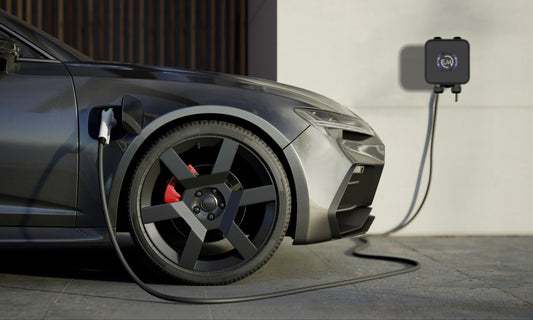
DRIVE2X: Delivering Renewal and Innovation to mass Vehicle Electrification enabled by V2X technologies
DriVe2X’s overall objective is to contribute to accelerate the uptake of V2X by: 1) deepening the state-of-the-art knowledge on this nascent field; 2) developing new V2X technologies and solutions suitable to mass EV deployment; and 3) producing policy tools and insights in support of relevant decision makers.
Global electric vehicle (EV) sales across all transport modes have grown steadily over the last decade. In 2020 only, there was a 41% increase in the registrations of newly acquired electric passenger light duty vehicles (e-PLDVs), despite the COVID-19 pandemic and a resulting 16% drop in overall car sales. By the end of 2020, there were over 11 million EVs on the road, whereas in 2010 this number was no greater than 500 000 cars. The shift to electromobility is gaining momentum and expert predictions place the worldwide EV stock somewhere between 250 million and 500 million units by 2035, and between 700 million and 1.1 billion units by 2050. In Europe, mass EV deployment carries a game-changing decarbonization potential due to the viable opportunity to introduce significantly higher shares of variable renewable energy (VRE) sources into the generation mix. This is aligned with the ambitious set of European Union (EU) policies aimed at reducing greenhouse gases (GHG) emissions in half by 2030, and at reaching climate neutrality by 2050. Electrification of passenger and commercial light duty vehicles, which alone are responsible for 12% and 2.5% of total emissions of carbon dioxide (CO2) in the EU (or 61% and 12% of total EU road transport emissions, respectively), brings the greatest promise, especially given recent consumer trends for bulkier and more polluting sport utility vehicles. Because DriVe2X’s concept and approach are grounded in a mass EV deployment vision that requires new technology and service breakthroughs to become realized, the project will advance the knowledge on smart charging methods, strategies and solutions well beyond current boundaries. The DriVe2X consortium believes that the mass deployment of V2X can only be achieved through disrupting mobility paradigms on various ends. This calls for multidisciplinary studies merging new technologies with novel marketplaces and new considerations of user behavioural trends and perceptions, which speaks of the high level of ambition of the DriVe2X project. Mass EV deployment futures will include marketplaces where the flexible energy potential from advanced smart charging will be traded as a commodity in the way other electricity market products are traded today. This paradigm will unlock revenue streams for EV users in a logic of service value stacking, which will help enhance the business cases for V2X. These emerging marketplaces will be centrepieces of multiple engrained innovations, linking novel AI and socially inspired digital solutions with the hardware units and the empowered EV users themselves, which offer a mobile storage asset that supports the grid dynamically. It is with this all-encompassing vision in mind that the DriVe2X consortium proposes to introduce advances in at least four fronts of scientific knowledge:
- The first concerns the service innovation at the electricity market level and the intelligent technologies that enable it, by providing accurate and reliable smart charging control in a privacy-assured manner;
- The second involves the bidirectional charging advancements, as another determinant part of the puzzle.
- The third concerns the game-changing innovations on the social and policy sides of V2X, whereas the fourth the modeling of upscaling scenarios as a support tool to decision makers on the smart city arena. In particular, EMOTION will play the role of Charging Point Operator (CPO), electric Mobility Service Provider (eMSP) and EV aggregator in the Italian demo comprised of:
1) two smart charging stations equipped with two Type 2 connector (22 kW each), Enabled by EMOT for remote control (i.e., power modulation and switching) and real-time monitoring;
2) two PV plants (240 kW);
3) a second-life battery storage from the completed ELSA project (66 kWh/72 kW);
4) an office building with warehouse (maximum power 150 kW), equipped with a BEMS for efficiently and remotely managing the HVAC loads;
5) a bio-diesel generator in case of islanding.
Moreover, a fleet of 10 EVs, made available by EMOT, will participate in the project, together with the aforementioned smart charging stations, already implemented by EMOT. These energy units are monitored by an Advanced Metering Infrastructure which provides real-time data as well as historical data. Furthermore, the pilot site is going to be enriched with a DC branch that creates a hybrid DC/AC microgrid, which will host a FAST charging station with a 50 kW power output provided by EMOT.






